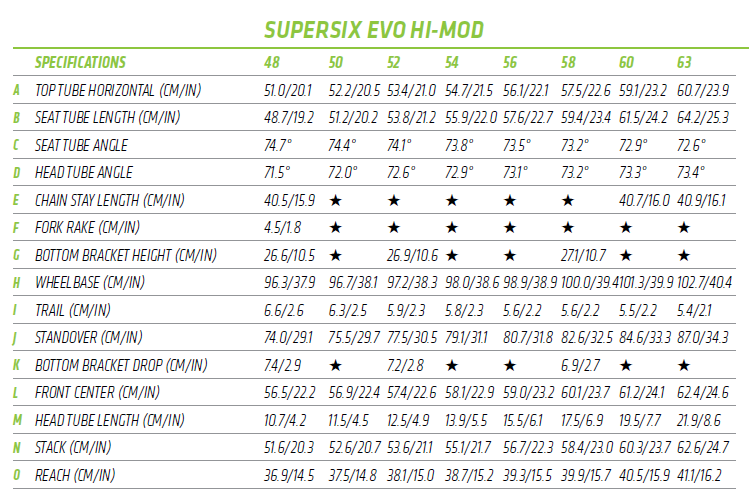Cannondale 2016 Evo: Damon Rinard leads switch to Stack-Reach design
Previously I blew it by posting that Cannondale had retained the old geometry for the new 2016 Evo. This had shocked me since I knew they'd hired Damon Rinard, formerly of Cervélo, the pioneer in stack-reach design, something the old Cannondale clearly did not follow with weird kinks and jogs in its stack-reach progression due to odd jumps in seat tube angle as sizes increased. I'd gotten the geometry chart by clicking links on the Cannondale website, but somehow I'd clicked a link for the 2015 geometry starting from the 2016 Evo page. So I'd been too hasty.
Well, I was finally pointed to the correct geometry chart. Here's a comparison of old Evo and new Evo:
2015 Evo:

And, finally, the 2016 Evo:

Here's the stack-reach progression:

Plotting stack versus reach shows the design has switched to a stack-reach focus, with continuous small increments in seat tube angle rather than descrete jumps, with a design transitioning from closer to the Trek H2 in small sizes to closer to the Trek H1 in larget sizes, but always between the two.
Bottom brackets are 2 mm lower in every size except the 52. Previously there was a jump from 52 to 54, and now there's a jump from 50 to 52. The jump at 58 remains. This is consistent with the trend to fatter tires.
Trails are slighly increased relative to the older Evo, and are significantly larger than on the CAAD-10 curiously, in the small sizes, mostly because the CAAD-10 uses a 5 cm (as opposed to 4.5 cm) rake fork in the smaller sizes. Here's CAAD10 geometry, which other than the trail is similar to the older Evo:


Comments
Thanks,
Michael
Really you probably overestimate my fitting knowledge. What I show here is if you fit a particular Cannondale Evo 2015, what sort of changes would be needed in order to change to a 2016. The changes in many case are a few mm, and in any case stems don't come in such a small increment, so it becomes a matter of attaining a close but slightly different position. That might be better or worse but will probably be pretty much the same.
That said, I really like the Trek H1 and H2 because those show a clear differentiation between high stack (or short reach) and low stack (or long reach). You can often get the same position on both but with the H2 you might be with a really long stem, or with the H1 you might be with a lot of spacers, depending on how much drop you want, and that depends on flexibility and arm length and saddle position, for example. But most bikes like Cannondale just run a middle ground, and that seems to work well for most who aren't looking for "endurance" geometry.